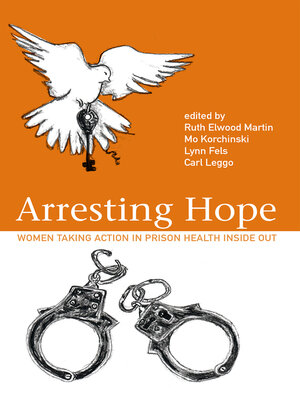
Sign up to save your library
With an OverDrive account, you can save your favorite libraries for at-a-glance information about availability. Find out more about OverDrive accounts.
Find this title in Libby, the library reading app by OverDrive.



Search for a digital library with this title
Title found at these libraries:
| Library Name | Distance |
|---|---|
| Loading... |
Arresting Hope reminds us that prisons are not only places of punishment, marginalization, and trauma, but that they can also be places of hope, blessing even, where people with difficult lived experiences can begin to compose stories full of healing, anticipation, communication, education, connection, and community. Arresting Hope does not present a romantic or nostalgic version of the story of a provincial correctional centre for women. It presents a story that acknowledges pressing challenges, but is also eager to present a testimony to how hopefulness is possible in prison. The editors of Arresting Hope promote hope because they have been arrested by hope's possibilities. Arresting Hope tells a story about women in a provincial prison in Canada, about how creative leadership fostered opportunities for transformation and hope, and about how engaging in research and writing contributed to healing. The book includes poetry, stories, letters, interviews, fragments of conversations, reflections, memories, quotations, journal entries, creative nonfiction, and scholarly research. Telling the whole story of a provincial correctional centre for women is impossible, simply because there are so many stories lived by so many people. Out of multiple and diverse possibilities involving many people, Arresting Hope is focused on five women—a prison doctor, a prison warden, a prison recreation therapist, a prison educator, and a prison inmate—and their stories of grief, desire, and hope. Readers of Arresting Hope Hope will re-trace the warden's vision from its inception. Readers will share in the prison doctor's journal entries and her exploration of, 'What is health?' for women in prison. Readers of Arresting Hope will learn about the ways that babies can live in prison. Readers will learn about the role of a recreation therapist in prison and the significance of Indigenous education in Canadian prisons. Readers will learn about participatory health research processes of transformation. Readers will be introduced to the narratives of some incarcerated women, including Mo Korchinski. They will journey with Mo Korchinski, from childhood through her revolving door incarcerations until she arrives in this prison. Readers will experience, in Mo's narratives and in her illustrations, the transformations that occurred in this prison. Readers of Arresting Hope will get to know Mo as prison inmate, writer and artist; they will also come to know Mo as advocate, researcher, woman, mother and grandmother.







